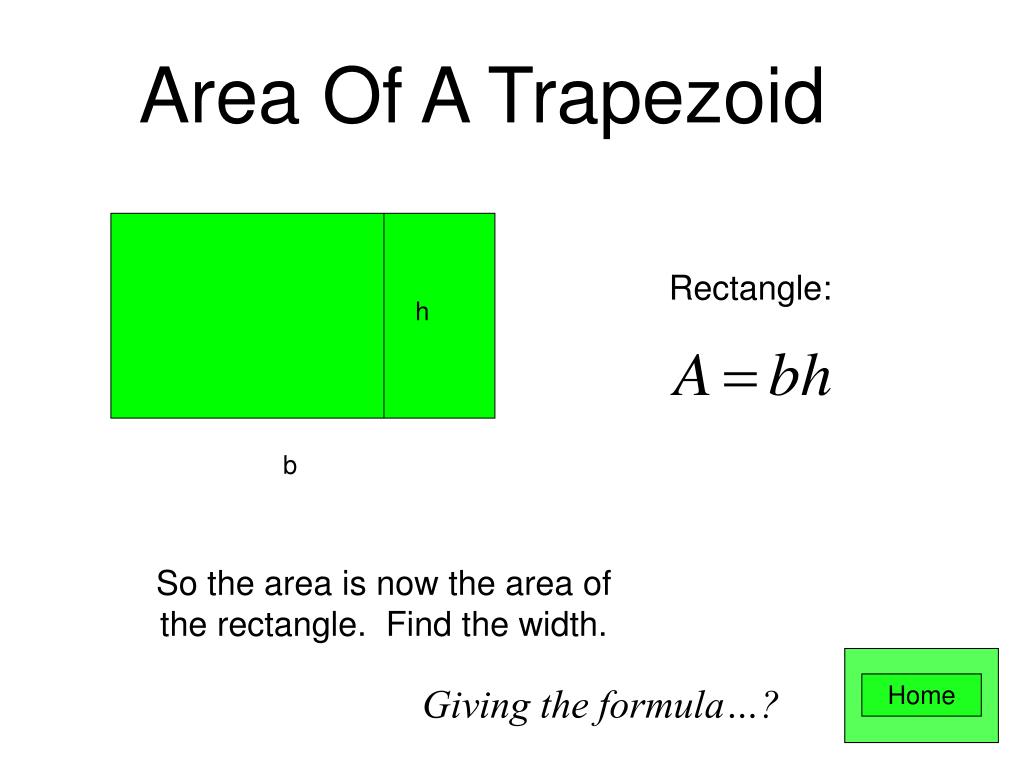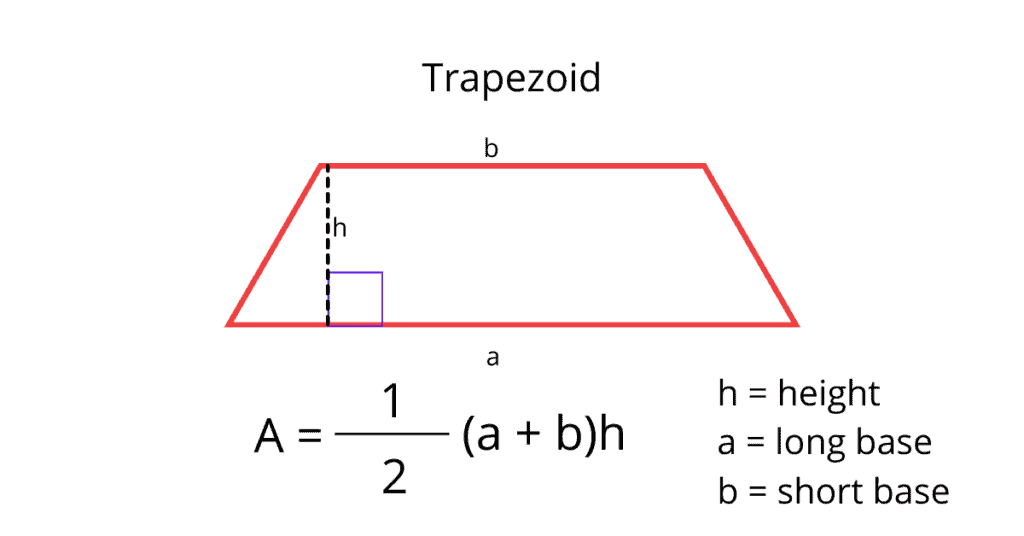

We multiply 6 times 3? Well, that would be the Multiplied this long base 6 times the height 3? So what do we get if Is, given the dimensions that they've given us, what And so this, byĭefinition, is a trapezoid. Where two of the sides are parallel to each other. Either way, you will get the same answer. You can intuitively visualise Steps 1-3 or you can even derive this expression by considering each Area portion and summing up the parts. Therefore, the area of the Trapezoid is equal to. In Area 3, the triangle area part of the Trapezoid is exactly one half of Area 3 Adding the 2 areas leads to double counting, so we take one half of the sum of smaller rectangle and Area 2ģ. In Area 2, the rectangle area part of the Trapezoid is equal to Area 2 as well as the area of the smaller rectangle. In Area 1, the triangle area part of the Trapezoid is exactly one half of Area 1Ģ. Let's call them Area 1, Area 2 and Area 3 from left to right. Think of it this way - split the larger rectangle into 3 parts as Sal has done in the video. We have tried to cover pretty much everything there is to know about the area of a trapezoid, from its derivation to solving different problems.So what Sal means by average in this particular video is that the area of the Trapezoid should be exactly half the area of the larger rectangle (6x3) and the smaller rectangle (2x3). Now, put in the known values to get the final answer: To find ‘a’ we rearrange the formula for area of a trapezoid to solve for “a”: We are there given the following information: This means that the height of trapezoid and the length of this side is the same. One side of this trapezium makes a 90-degree angle with both parallel sides. Find the unknown length of parallel side ‘a’. The area of the trapezoid given below is 100 cm 2. Now, we put in the known values and find the height: Recall the formula for the area of a trapezoid and solve for “h”. As we mentioned earlier in the article, it is the height of the trapezoid. We have to find the perpendicular distance between two parallel sides. What is the perpendicular distance between the two parallel sides? Solution: Let area of trapezoid be represented by variable ‘A’Īpply the formula for area of a trapezoid:Ī trapezoid having an area of 98 cm 2, has two parallel sides of lengths 16 cm and 12 cm. Example 1:įind the area of the trapezoid given below: Hopefully, now you fully understand the concept behind the formula of the area of a trapezoid. Taking \(\frac\) as the common factor we get: Therefore, area of the trapezoid will be: The height of both triangles is the same. If we find the area of these two triangles and then add them, we will get the area of the whole trapezoid! The base of the upper triangle is length ‘a’ and the base of the lower triangle is the length ‘b’.

Look carefully and you will notice that a trapezoid can be cut diagonally to form two triangles: Now, how does this knowledge help us in figuring out the formula of the area of a trapezoid? Let’s see. Remember the concept of base and height and label accordingly. See the diagrams below for more clarity on the height-base concept.ĭo not get confused if the shape of the triangle is not what you typically expect. Whichever side of the triangle you select as ‘base’, measure the height by considering the corner exactly opposite to the base. The height of the triangle is given as the perpendicular distance from one corner of the triangle to the base level. Two parameters that you need to know to find the area of triangle are the height of the triangle and the base of the triangle.
#FIND AREA OF RECTANGLE TRAPEZOID HOW TO#
You might already know how to calculate the area of a triangle, but we will review it briefly, just in case you have forgotten or you don’t know. This formula is derived from the concept of the area of a triangle. By perpendicular distance, we mean that the length of the line that joins parallel side ‘a’ and ‘b’ and is exactly 90 degrees to them.

The height is the perpendicular distance between the two parallel sides. There are three important lengths that you need to know to find the area of a trapezoid: lengths of the two parallel sides ‘a’ and ‘b’ and the height. Now that you are clear about the shape of a trapezoid, let’s discuss the parameters you need to know, in order to find its area.

In real life there are a lot of objects with trapezoid shapes that you may or may not have noticed. Notice that the parallel lines are marked with arrows. Some possible trapezoid shapes are shown below to clarify the concept. It has two parallel sides and the remaining two sides can be of any length, at any angle. A trapezoid is an interesting four-sided geometric figure.


 0 kommentar(er)
0 kommentar(er)
